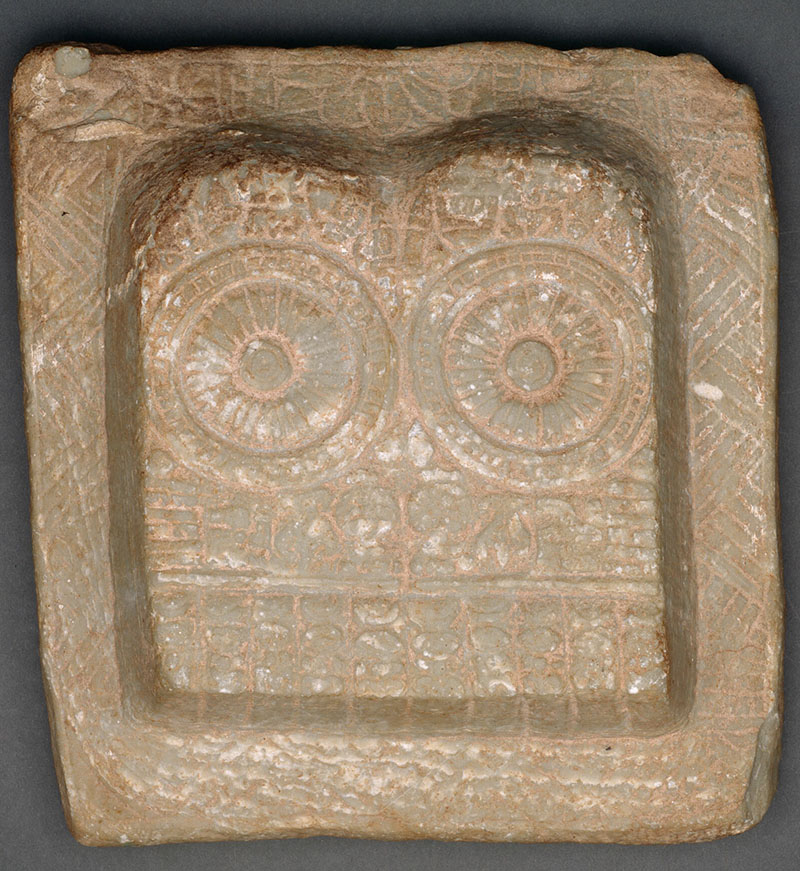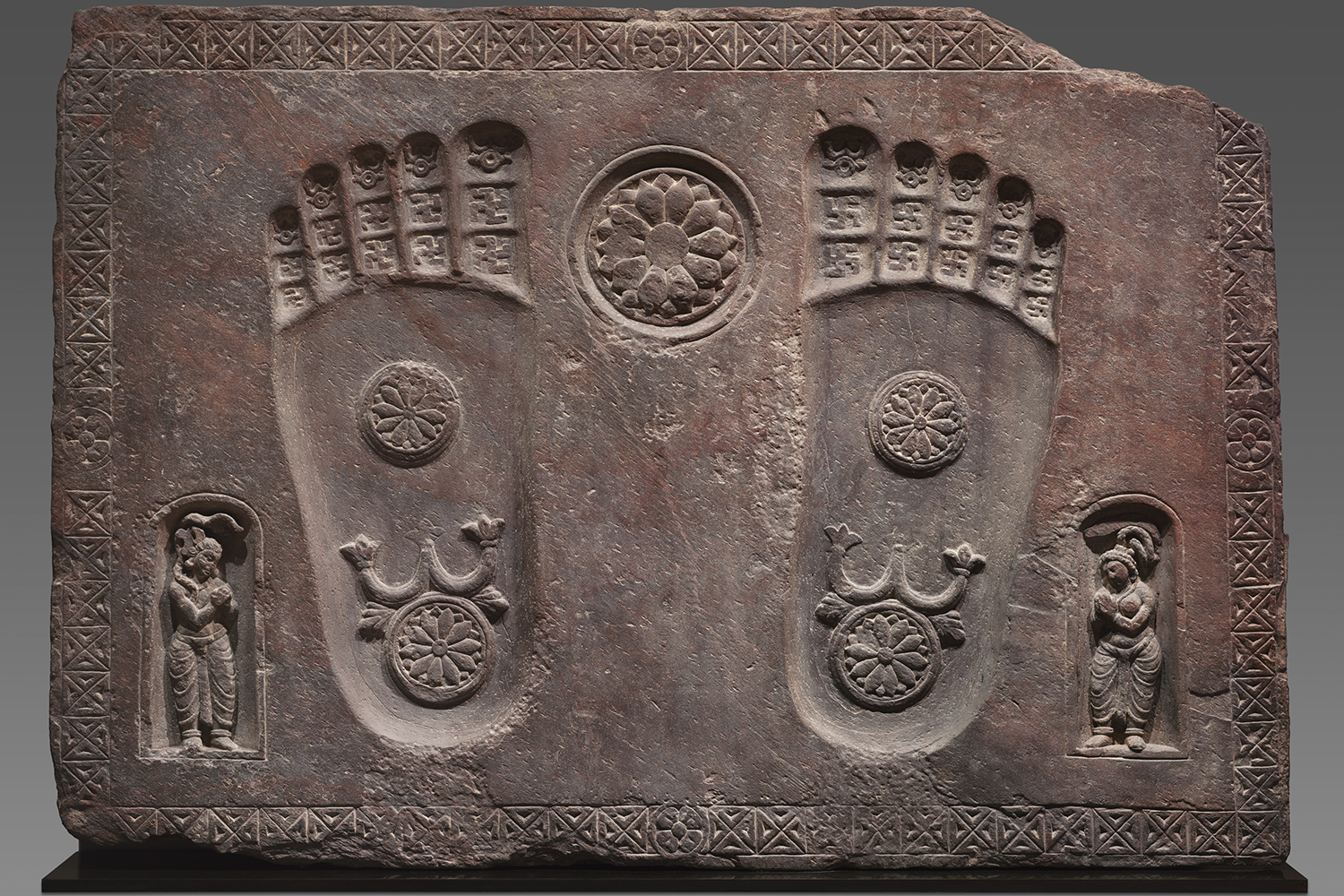ARTICLE
Buddhapada
The feet are typically shown with all the toes of the same length — an allusion to the physical and spiritual perfection of the Buddha — usually with indentations marking segments of each toe, and a dharmachakra in the centre of the sole. Other symbols that appear on the Buddhapada include the lotus, the swastika, the triratna and a combination of the dharmachakra and lotus. Grids of an auspicious number of cells, ranging between 8 and 132, are sometimes depicted on the soles of the feet, and contain symbols associated with the Buddha. In other instances, symbols are placed outside of the grid as well, as seen in some Gandharan Buddhapadas where the symbols are all fitted into the segments of the toes, and larger symbols are placed in the centre of the sole and heel. Buddhapada artefacts from Southeast Asia that have a grid often feature a larger number of cells, arranged across the entire sole barring the toes. In certain instances, instead of a pair, the Buddapada might be a single foot.
Buddhapada are sometimes flanked by standing or kneeling figures of yakshas, yakshis, nagas, naginis and devotees. These figures may be depicted with their hands held in the anjali mudra, believed to be offering their respects to the aniconic symbol of the Buddha. The placement of figures around the Buddhapada is often an indication of whether the toes were meant to point towards the viewer or away from them, although scholars are unsure of the significance of either orientation.
The feet of the Buddha find mention in scripture and Buddhist oral traditions, with special attention paid to the associated motifs. This includes poems such as the Narasimha Gatha, likely composed in the early centuries CE, and commentary such as Buddhagosa’s Sumangalavilasini dated to the fifth century CE. Large, naturally-occurring, singular oblong depressions in the rock at some sites — notably at Adam’s Peak in Sri Lanka and the Wat Phra Phutthabat temple in Thailand — are believed by locals to be individual footprints of the Buddha, and are worshipped as relics.
The Buddhapada appears across South Asia, from Gandhara in the north, through the Gangetic Plains and the Deccan plateau, and Sri Lanka in the south. It continues to be a venerated symbol in the wider Buddhist world, especially in Tibet, Myanmar and Thailand, in Buddhist rituals.
Bibliography
Our website is currently undergoing maintenance and re-design, due to which we have had to take down some of our bibliographies. While these will be re-published shortly, you can request references for specific articles by writing to hellomapacademy@map-india.org.








